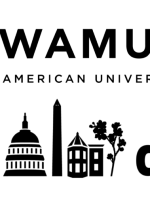Read the (archived DCist) version on Wayback Machine.
New recommendations from a Smithsonian task force will soon require the institution to dedicate more resources to returning as many human remains in its collection as possible by the year 2030 — with a priority on the Native American and African American communities many of the remains were taken from.
The Smithsonian has a collection of more than 30,000 bones, hair, brains and fetal remains — most of it under the care of the National Museum of Natural History.
The new report — which was compiled by the institution’s Human Remains Task Force, sent to Smithsonian Secretary Lonnie Bunch in January and made public last week — provides recommendations on what the Smithsonian policy should be on handling and returning human remains in its collection. After Bunch’s review, the policies are set to become official in the fall, according to a Smithsonian spokesperson.
The report from the task force — a group of scholars, curators and museum directors from within and outside the Smithsonian — commented on the scientific racism that enabled the collection and research of the remains.
“Historic inequities facilitated the expropriation, curation, and unconsented use of human bodies,” one section reads. “This is our unfortunate inheritance, a racist legacy that burdens the Smithsonian and prolongs this injustice.”
Among the remains are an early 20th century collection of brains acquired from D.C.-area residents, many of them Black, without their consent, a Washington Post investigation revealed in December. Those brains and others are currently stored in a facility in Suitland, Maryland.
Nearly half of the thousands of human remains in the larger collection belonged to Native Americans. Of those, more than 6,300 body parts have been returned or offered back to the families and communities they came from in response to the 1989 National Museum of the American Indian Act.
Many of the remains were acquired during the early to mid-20th century through purchases, trades, donation and plundering — though collection continued into the 21st century through “archaeological excavations, institutional transfers, body donations, and forensic casework,” according to the report.
“While much of this collecting of human remains was done by curators and individuals long dead, it occurred at the Smithsonian and relied on the Smithsonian’s resources, reputation, and influence,” the task force wrote. “The original intent of collecting these human remains was morally abhorrent, because it sought to prove the superiority of white people and their descendants to Native Americans, African Americans, and others through scientific means that are now thoroughly discredited.”
The Smithsonian’s goal is to establish ethical standards and to “seek justice for those harmed or exploited,” the report states.
The collection includes roughly 6,000 remains belonging to individuals who have been identified fully or with part of their names or initials. The Smithsonian will prioritize returning those remains to descendants or relevant communities and organizations, as well as those belonging to Native Americans, Indigenous people from other countries and African American communities.
The report recommends that the Smithsonian streamline its returns processes, and dedicate more staff and funding toward the effort. It also lays out suggested procedures for how to properly handle remains when a descendant cannot be identified, provides guidance on how to memorialize unidentified remains that go unclaimed and aims to restrict research on the overall collection. It would mandate that all future collections of human remains will only take place with consent of family members, descendants or their communities.
The recommendations came out last week, but Bunch has made regular statements on the human remains policy since January 2023.
“Human remains is really an important and sometimes problematic subject for museums,” Bunch said in October 2023. “What we want to do is ask the fundamental question of what is the role of human remains? Should we have human remains?”
He added that the purpose of the task force was to craft policy recommendations that treat “these items not as specimens but as humans.”
These recommendations will shape the revised Smithsonian human remains policies that will be made public in the fall, a spokesperson said. In the meantime, the Smithsonian has paused all research on the remains and additions to its collection.



